I discovered the paintings of Odilon Redon (1840-1916), a French artist and Symbolist working mostly in charcoal, pastel, and oil, several years ago when I first started painting. I became so fascinated by his artwork that I tried to capture what he was doing in my own paintings. It was a way to loosen up my own work and let imagination and feeling free me from an over-reliance on realism.
Many of his paintings featured things I love—boats, the sea, and underwater images— which no doubt is why I first gravitated to his work. But I think his musical compositions, his richly saturated colors, and his turn toward the poetic—the mystical and mythic—also drew me.
His interest in Eastern philosophy, the indeterminate and invisible, also drew me to him. He is an artist that speaks to my heart.
His paintings are dreamlike evocations of reality. He wrote this about his painting below, Underwater Vision: “You will feel the poetry of the sands, the charms of the air of the imperceptible line. While I recognize the necessity for a basis of observed reality . . . true art lies in a reality that is felt.”
His earlier work, mostly in charcoal and lithograph, was dark and sometimes seemed demonic (a spider with a human head, for instance.) But later they became full of light. One art historian says that Redon began to want his works to portray “the triumph of light over darkness.”
Redon wrote: “My drawings inspire, and are not to be defined. They place us, as does music, in the ambiguous realm of the undetermined.”
Often I like pairing art and poetry with music, all of which places us in the ambiguous realm of the indeterminate. Here’s a variation on Chopin’s Nocturn in F Minor that captures for me both that and Redon’s mysterious and poetic paintings. Enjoy.
I’d love to hear what you think of Redon’s paintings and this music.
If you enjoy music and poetry you might like these posts I wrote some time ago featuring Pat Metheny’s The Truth Will Always Be and his moving tribute to Bill Evans.




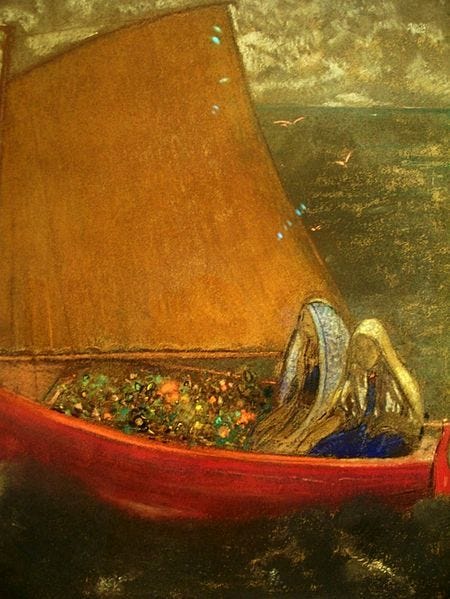
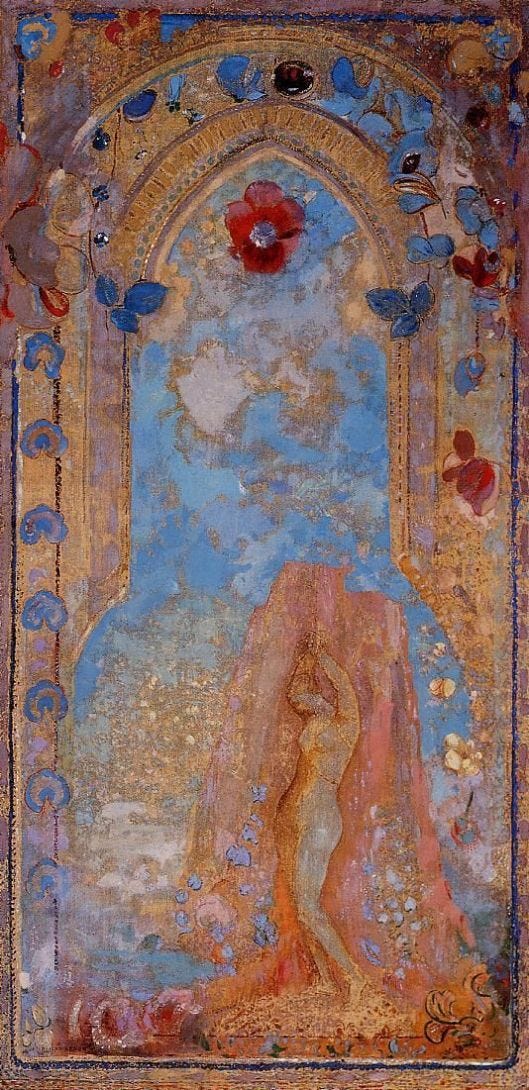
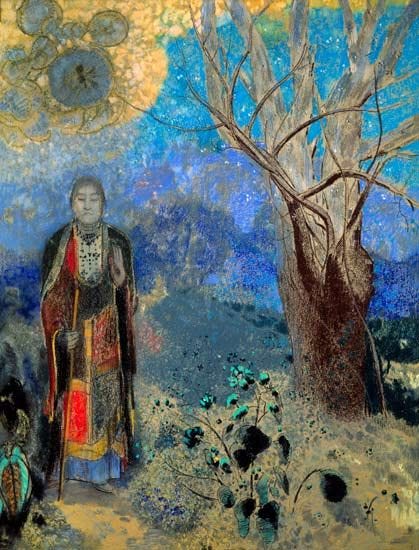
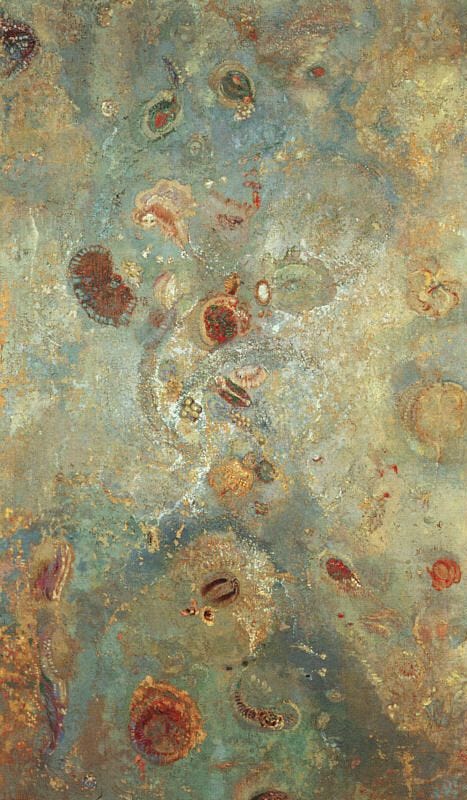

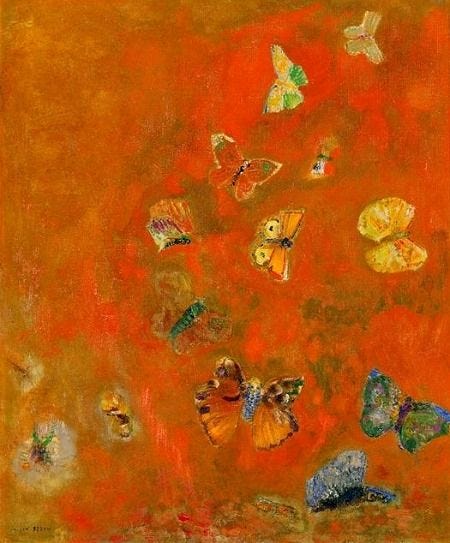
I remember seeing his work in art books for the first time, when I was a teenager. The sense of mystery is immediate with his artwork. It also feels contemporary.
I, too, love Redon. His dreamy and, at times, nightmarish imagery is wild. The strange rabbit-like figures, huge eyes, floating heads, and plant-like structures that inhabit many of his pieces are essentially Surrealism decades before the movement. I think his work definitely got darker and stranger after the war (Franco-Prussian War). For somebody whose paintings used vibrant color, he was also a master at using black (especially in his prints).
The gentle piano of Lawson's Chopin interpretation is almost like Redon's soft flutter of brush marks & dapples of vibrant color and light in 'Evocation of Butterflies' and 'The Yellow Sail.'